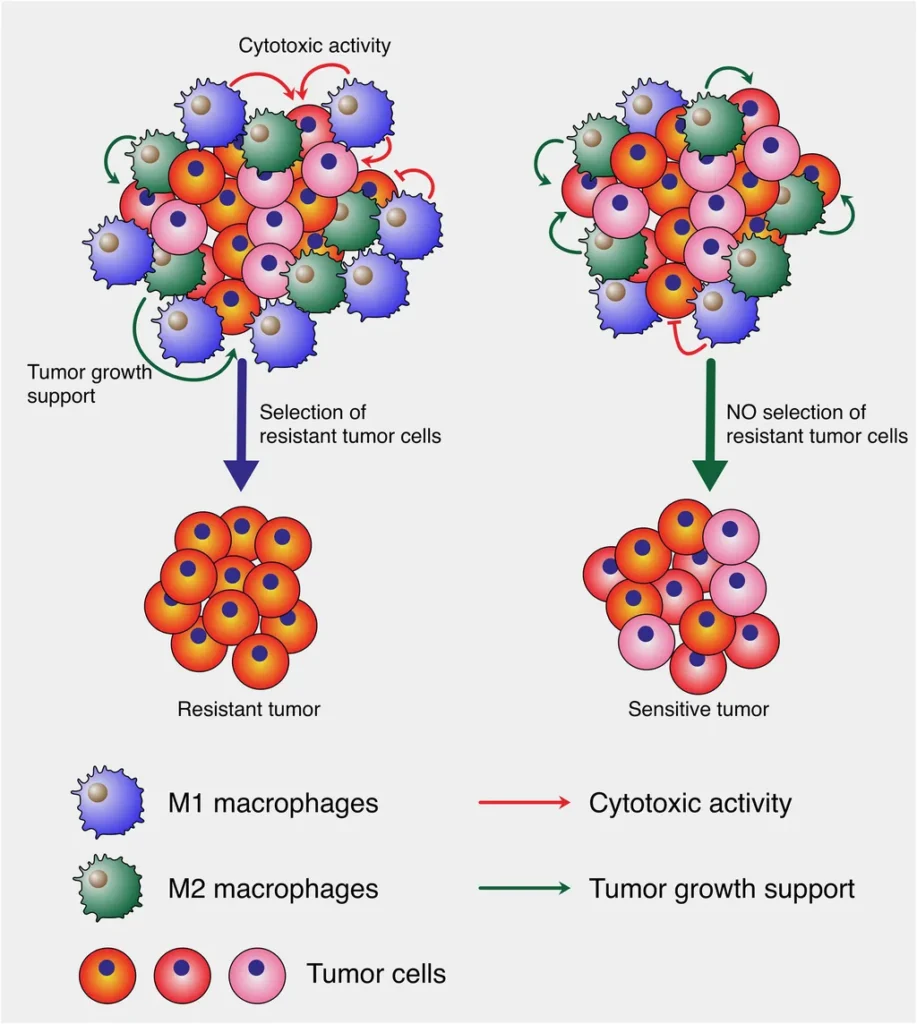In the relentless pursuit of combating liver cancer, a recent study published in the journal ‘Molecules’ (Molekule in English) has shed new light on the complex interplay between immune cells and cancer cells. The research, led by Marta Wójcik from the Oncology Lab at the University of Life Sciences in Lublin, Poland, explores the impact of proinflammatory M1 macrophages on the proliferation and expression of key proteins in hepatocytes isolated from a rat model of hepatocellular carcinoma (HCC).
Hepatocellular carcinoma, the most common type of liver cancer, is notoriously resistant to conventional therapies. This resistance has sparked interest in novel immunotherapeutic approaches, with the tumor microenvironment (TME) being a hotspot for investigation. Wójcik’s study focuses on the role of M1 macrophages, a type of immune cell known for its proinflammatory properties, and their effect on the expression of cyclin E2 (CE2) and mitogen-activated protein kinases 4 and 7 (Mapk4/7) in liver cells.
The study utilized a rat model of partial hepatectomy (PH) with or without diethylnitrosamine (DEN)-induced HCC. The results revealed that overexpression of CE2 and increased proliferation were observed in PH/DEN hepatocytes. However, when these cells were exposed to proinflammatory M1 macrophages, their proliferative activity significantly decreased. “This suggests that M1 macrophages may have a suppressive effect on the proliferation of liver cancer cells,” Wójcik explained.
The expression patterns of Mapk4/7 were also modulated by the TME and differed significantly depending on the activation status of the macrophages in both PH and PH/DEN-derived hepatocytes. Interestingly, compared with control macrophages, M1 macrophages did not significantly affect Mapk4/7 expression.
These findings could have significant implications for the development of immunotherapies for liver cancer. By understanding the complex interactions between immune cells and cancer cells, researchers may be able to develop more effective treatments that harness the body’s own immune system to fight cancer.
The study also highlights the importance of animal models in cancer research. The use of rats in this study allowed researchers to closely mimic the human disease and gain valuable insights into the underlying mechanisms. “Animal models are invaluable tools in cancer research,” Wójcik said. “They allow us to study the disease in a controlled environment and test potential therapies before moving on to human trials.”
The commercial impacts of this research could be substantial, particularly in the energy sector. Liver cancer is a significant global health burden, with high morbidity and mortality rates. The development of effective immunotherapies could not only improve patient outcomes but also reduce the economic burden of the disease. Moreover, the insights gained from this study could pave the way for the development of new diagnostic tools and biomarkers, further enhancing the fight against liver cancer.
In conclusion, Wójcik’s study published in ‘Molecules’ provides a deeper understanding of the role of M1 macrophages in the tumor microenvironment and their impact on the proliferation and expression of key proteins in liver cancer cells. This research could shape future developments in the field of immunotherapies and contribute to the global effort to combat liver cancer. As we continue to unravel the complexities of the tumor microenvironment, we move one step closer to finding a cure for this devastating disease.

